Double rows stud roll forming machines continuously form structural metal studs with dual protruding ridges from steel coil feedstocks. The machines utilize a series of roller dies to progressively shape flat strip substrate into C or Z section studs with vertical web and uniform horizontal flange ridges running along both sides of the member length.
This guide covers standard offerings, the roll forming process basics, machine component details, operational guidance, customization possibilities, supplier comparisons, selection factors, pros vs cons considerations, and commonly asked questions regarding double rows stud roll forming line equipment.
double rows stud roll forming machine Types
Double rows stud roll former types include manual, automatic, and customized CNC programmable lines (Table 1):
| Type | 描述 |
|---|---|
| Manual | Basic manually adjustable roll dies |
| Automatic | Servo powered auto gauging and speed control |
| Standard | Common stud geometries and sizes |
| Customized | Special profiles or inline operations |
Table 1. Double Rows Stud Roll Former Model Options
The systems integrate with auxiliary uncoilers, feed tables, levelers, saws and exit conveyors.
How Double Row Stud Roll Forming Works
The roll forming process utilizes shaped roller dies to incrementally cold form continuous flat strip stock into final stud profiles with two protruding flanges along both sides of the vertical web as it passes through the production line (Figure 1). Steps include:
- Feeding line level sheet into system from coil
- Progressively cold roll forming with upper/lower roller dies
- Bending narrow horizontal flanges uniformly up from web
- Calibrating final profile to intended dimensions
- Shearing cutoff studs to length upon exit
- Accumulating or coiling finished parts
Figure 1. Double Row Stud Roll Forming Diagram
The number of progressive stands, tooling geometry, and process settings determine the final stud specifications.
Double Row Stud Roll Forming Equipment Components
Key system components influencing functionality include (Table 2):
| Component | Descriptions |
|---|---|
| Forming rollers | Solid precision CNC machined roller dies |
| 辊站 | Upper/lower die sets responsible for each bend sequence |
| Roller shafts | Driven forming roller rotation via gears/chains |
| Sheet guides | Centered strip guidance during forming |
| Feeding system | Pulls or pushes strip through roll stations |
| Shearing | Hydraulic cut-off presses slice output |
| डेकोइलर | Unwinds raw strip coil stock |
| Automation | Servo feed drives, gauging sensors |
Table 2. Double Row Stud Roll Former Parts Overview
Customizing Double Row Stud Lines
Specialized structural stud requirements involve custom roll forming solutions including:
| Area | Customization Possibilities |
|---|---|
| Profile geometry | Unique vertical web height, horizontal flange sizes |
| Flange counts | Beyond traditional double rows, additional protrusions |
| Width capacity | Machines accommodating over 1.5m part widths |
| Tooling materials | Custom metal alloys tailored for niche sheeting grades |
| Added operations | Hole punching, tapping, offset notch cuts |
| Automation | Advanced servo controls and monitoring |
| Material handling | Decoiler, exit conveyor, pack table options |
| Data logging | Advanced gauge stats, predictive maintenance |
| Safety | Expanded guarding, maintenance platforms |
Close collaboration between engineers and roll tooling specialists enables specialized stud profiles.
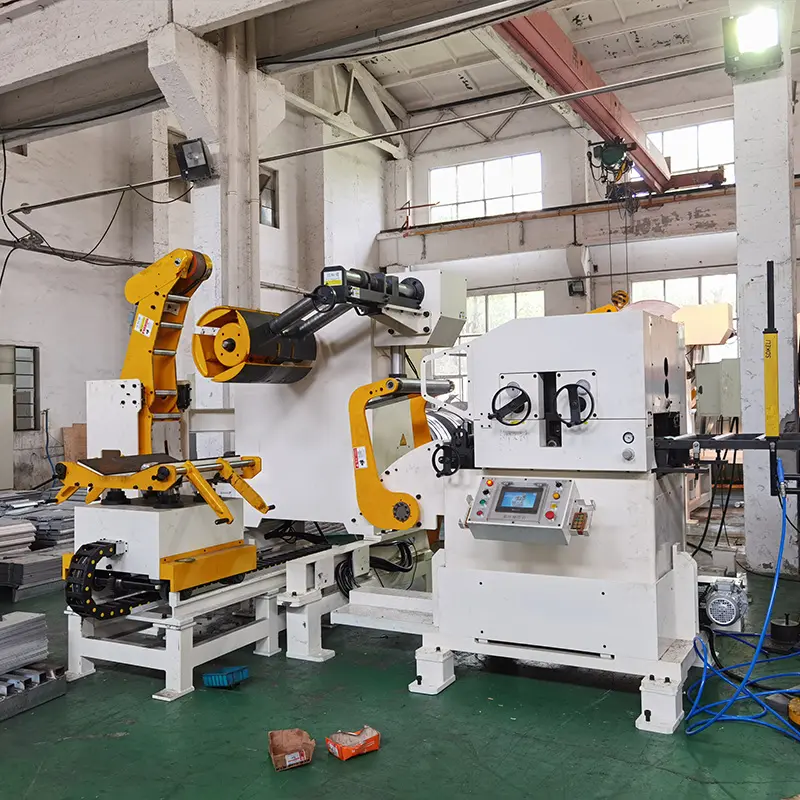
Double Row Stud Roll Former Pricing and Suppliers
| Manufacturer | Location | Price Range |
|---|---|---|
| Formtek | USA | $$$$$ |
| Gasparini SPA | इटली | $$$ |
| Hangzhou Roll Form | China | $$ |
| Zhejiang New Shengda | China | $$ |
| CustomPartNet | USA | $$$$ |
Table 3. Double Row Stud Roll Forming Equipment Suppliers and Prices
Cost ranges span from $10,000 for elementary Chinese machinery up to $300,000+ for sophisticated American lines engineered for high production environments.
Operational Procedures for Double Row Stud Roll Lines
Efficient ongoing operation procedures include:
| Activity | Descriptions |
|---|---|
| Setup | Stage strip coils, thread through stands, set feed rates, test run profiles, finalize calibrations |
| Operation | Monitor sheet tracking/alignment, confirm output dimensional uniformity via gauging, log any errors |
| Maintenance | Replace worn rollers, lubricate bearings/slides, calibrate automation controls |
Table 4. Double Row Stud Roll Former Procedures
Schedule preventative maintenance appropriately to minimize unplanned downtime. Continuously inspect output profile correctness.
Comparison Factors for Double Row Stud Roll Equipment
| Consideration | विवरण |
|---|---|
| Annual volume targets | Match acceptable process speeds to output needs |
| Part dimensions | Check against machine width capacities and die access |
| Material properties | Strength, allowable thickness range |
| Added operations | Requirements for hole punching/notching |
| Budget constraints | Throughput objectives vs capital outlays |
| Location factors | Available qualified global machinery supply sources |
| Scalability | Secondary future tooling, capacity increases |
Analyze current and future projection requirements against machine specifications and supplier expertise.
-
 विद्युत कैबिनेट फ्रेम रोल बनाने की मशीन
विद्युत कैबिनेट फ्रेम रोल बनाने की मशीन -
 दीन रेल रोल बनाने की मशीन
दीन रेल रोल बनाने की मशीन -
 केबल सीढ़ी रोल बनाने की मशीन
केबल सीढ़ी रोल बनाने की मशीन -
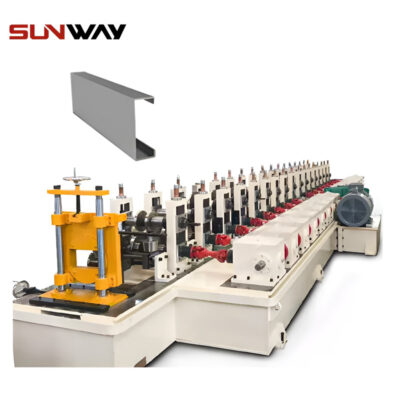 पीवी माउंटिंग ब्रैकेट सी शेप प्रोफाइल रोल बनाने की मशीन
पीवी माउंटिंग ब्रैकेट सी शेप प्रोफाइल रोल बनाने की मशीन -
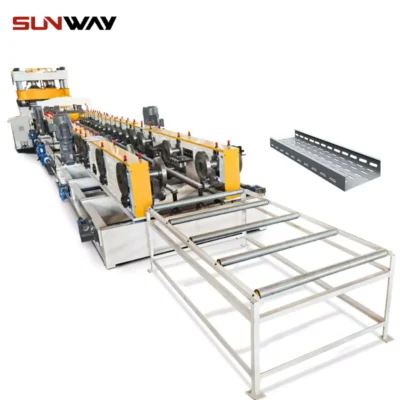 केबल ट्रे रोल बनाने की मशीन
केबल ट्रे रोल बनाने की मशीन -
 पीवी माउंटिंग ब्रैकेट रोल बनाने की मशीन (एचएटी / ओमेगा प्रोफाइल)
पीवी माउंटिंग ब्रैकेट रोल बनाने की मशीन (एचएटी / ओमेगा प्रोफाइल) -
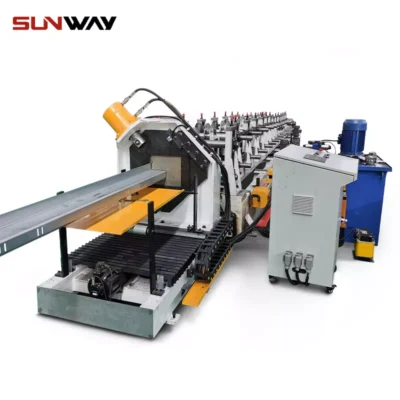 पीवी माउंटिंग ब्रैकेट जेड शेप प्रोफाइल रोल बनाने की मशीन
पीवी माउंटिंग ब्रैकेट जेड शेप प्रोफाइल रोल बनाने की मशीन -
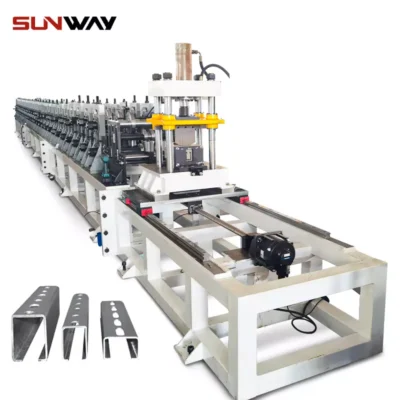 सौर बढ़ते अकड़ चैनल रोल बनाने की मशीन
सौर बढ़ते अकड़ चैनल रोल बनाने की मशीन -
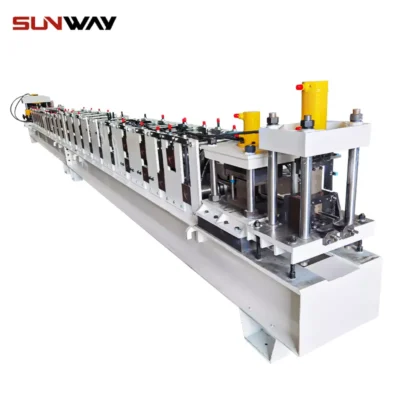 स्ट्रट चैनल रोल बनाने की मशीन
स्ट्रट चैनल रोल बनाने की मशीन
Evaluating Pros and Cons of Double Row Stud Lines
| 优势 | Disadvantages |
|---|---|
| High speed continuous processing | Initial machinery capital investments |
| Consistent uniform output stud quality | Customized tooling costs |
| High dimensional precision standards | Setup/changeover down time requirements |
| Retention of base material properties | Operation and maintenance skill needs |
| Limited raw material waste | Size range constraints by model |
| Scalability via added stations | Require precision monitoring |
Table 5. Double Row Stud Roll Former Benefits vs Limitations
When applied appropriately for sufficient volumes, roll forming offers clear manufacturing performance advantages over alternate fabrication approaches.
सामान्य प्रश्न
What thickness range can double rows stud roll formers handle?
Standard models process material thicknesses from 0.75mm – ~5mm hot rolled coils and galvanized sheet products. Thinner gauges depend on required bend radii while thickness equates to drive power.
How fast do these machines operate?
Typical production line speeds averaging 10-15 meters per minute enable rapid processing suited for most structural metal stud volume requirements. Appropriate feed power settings prevent tearing.
What expertise is recommended for operation?
Some automation eases skill requirements, however mechanical fabrication experience proves helpful for optimizing output through procedural adjustments and troubleshooting quality issues.
